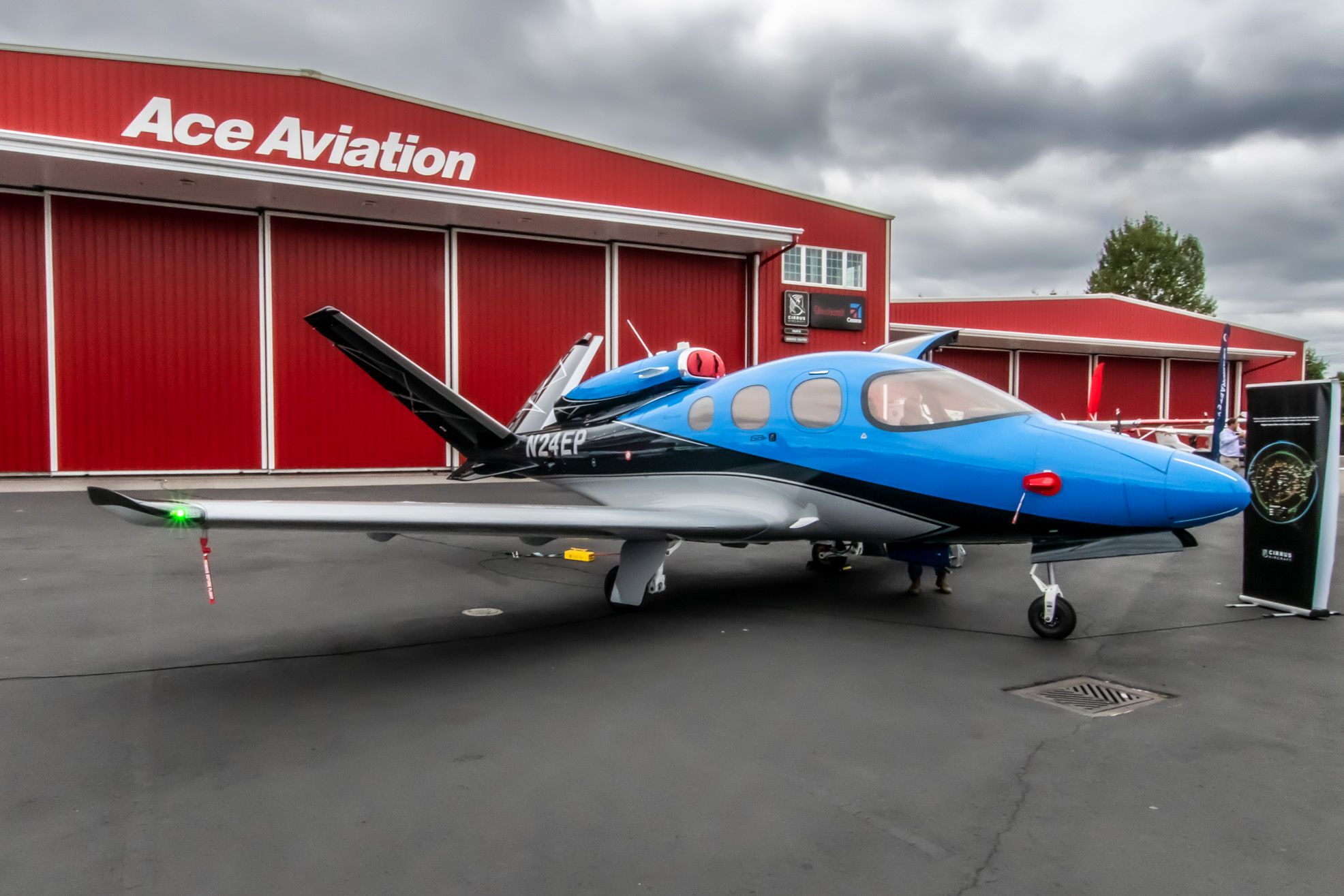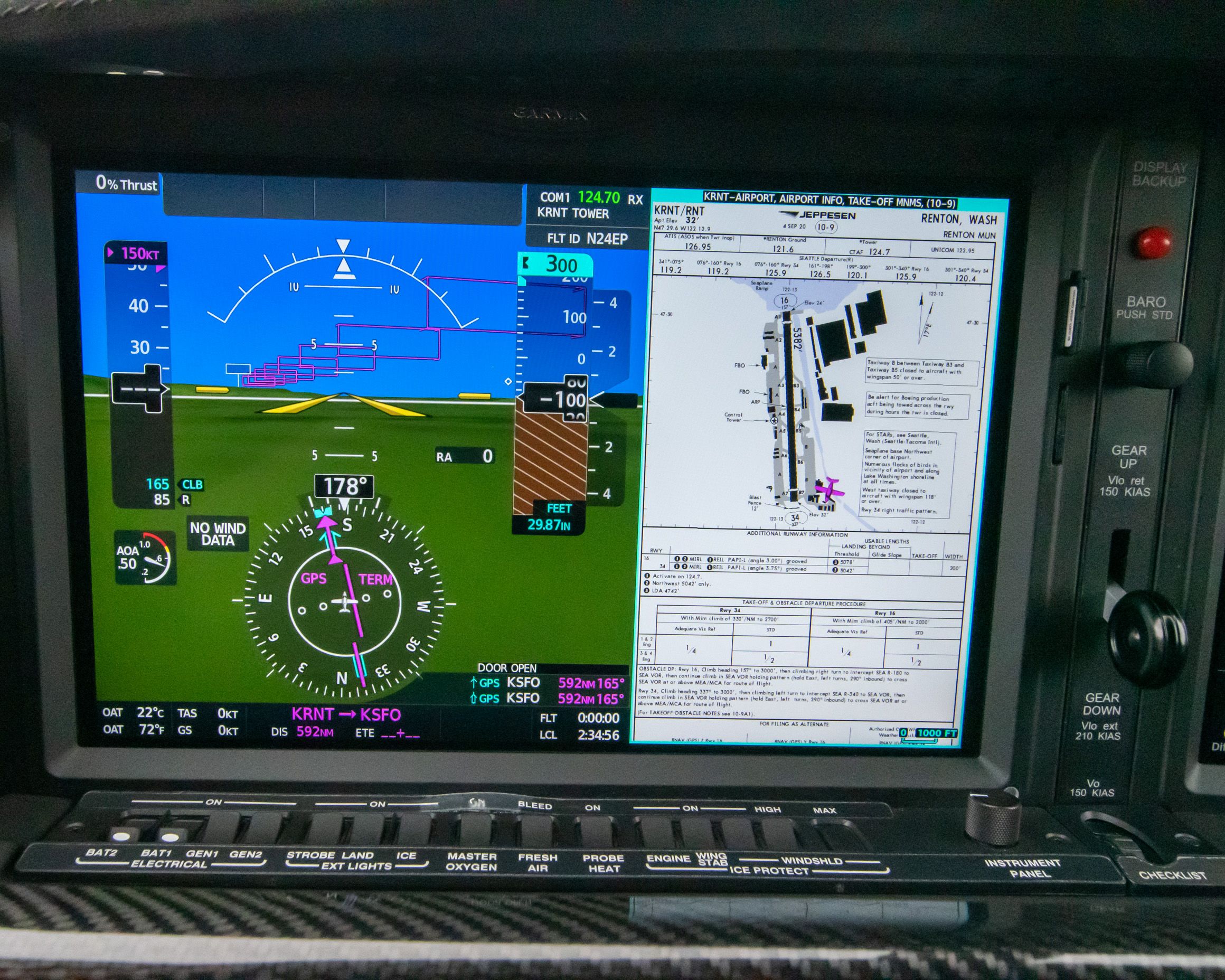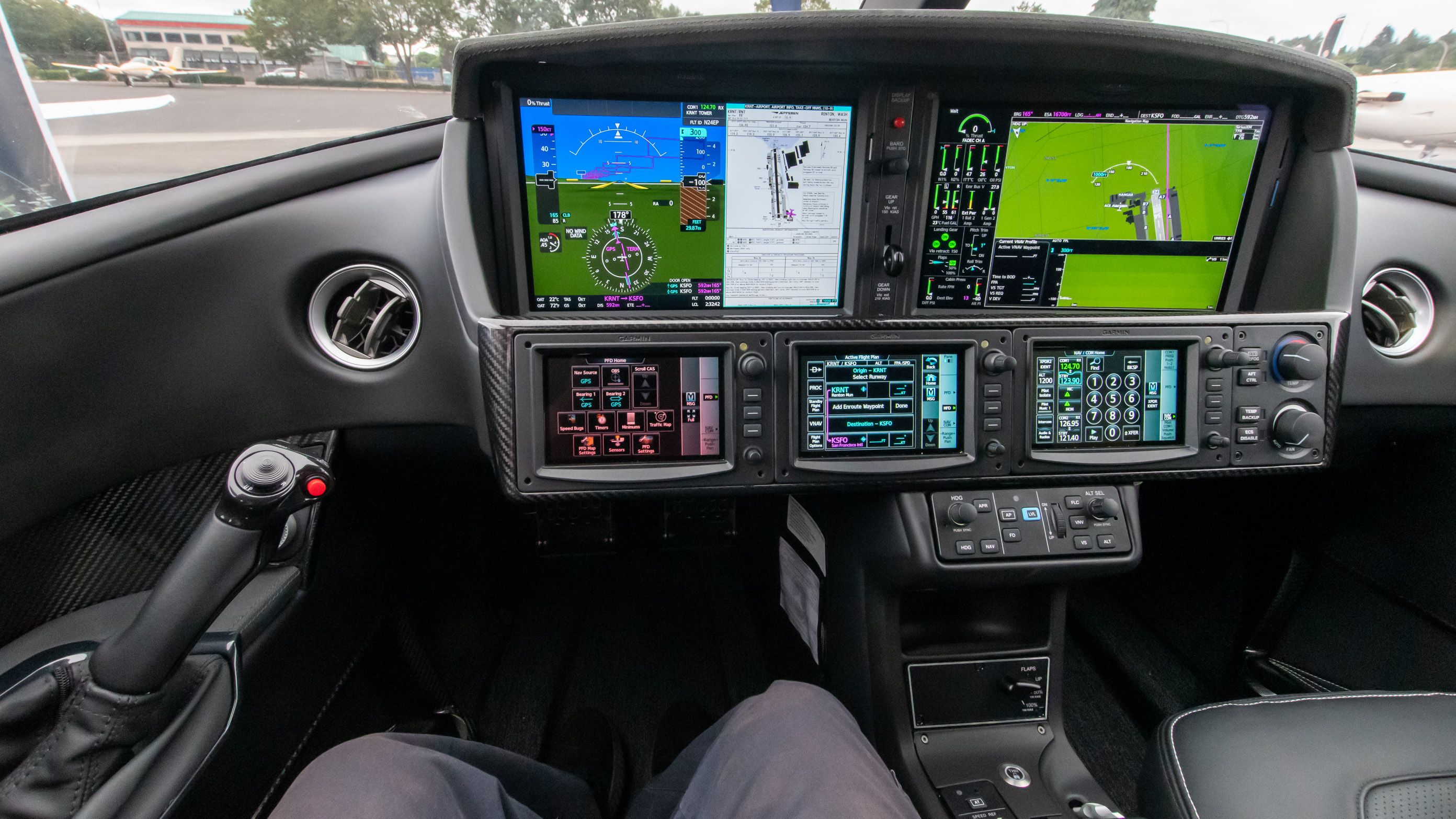A look into the Cirrus Vision Jet – a jet which, in the words of Cirrus, “is the culmination of relentless innovation” to blend excellent performance with ease of flying, owning, and operating. Although recently the Cirrus Vision Jet was profiled, below is a review of the most upgraded version of the Vision Jet after a recent visit to the US Aircraft Expo that came by Renton, Washington State, USA.
What can the Cirrus Vision Jet do?
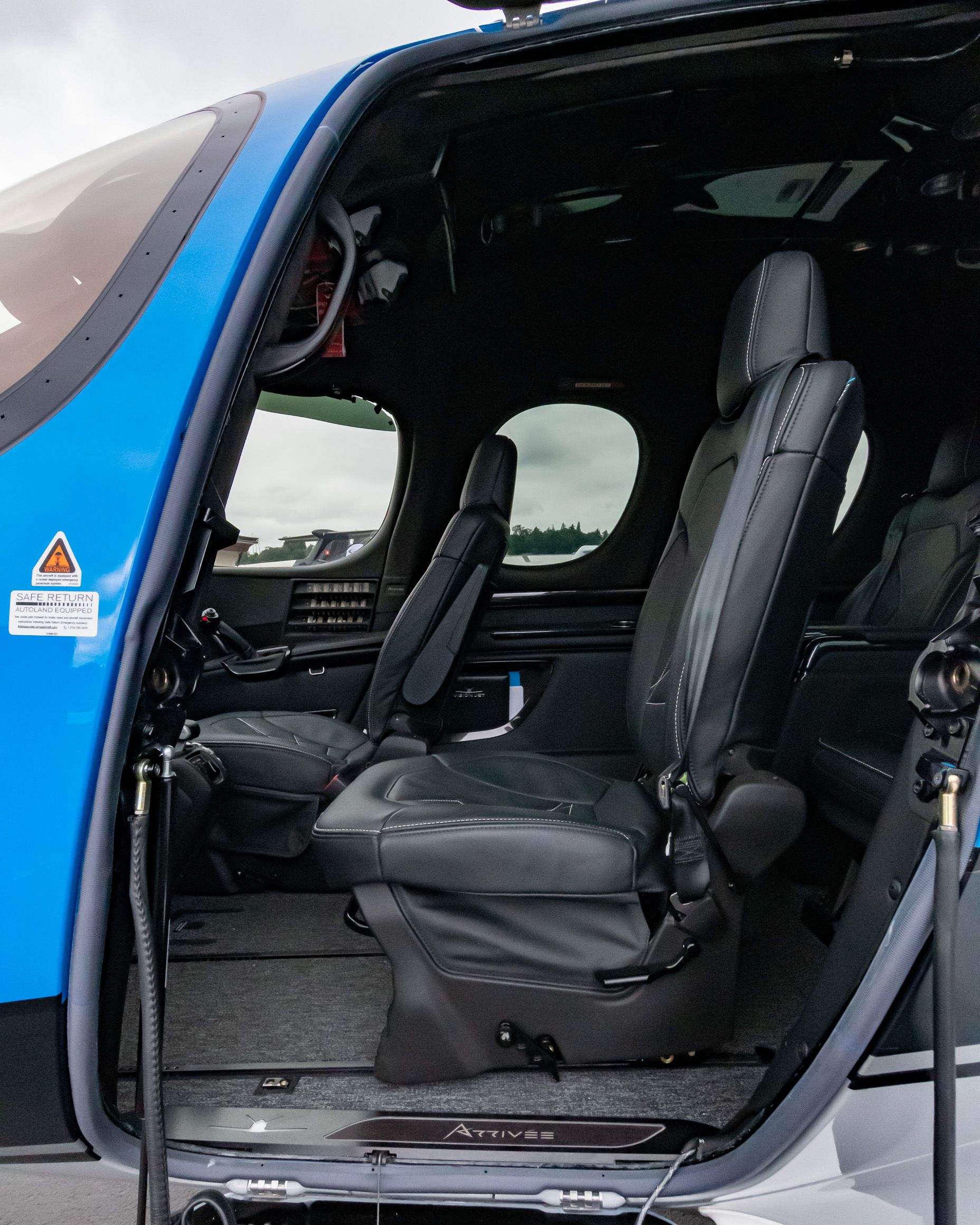
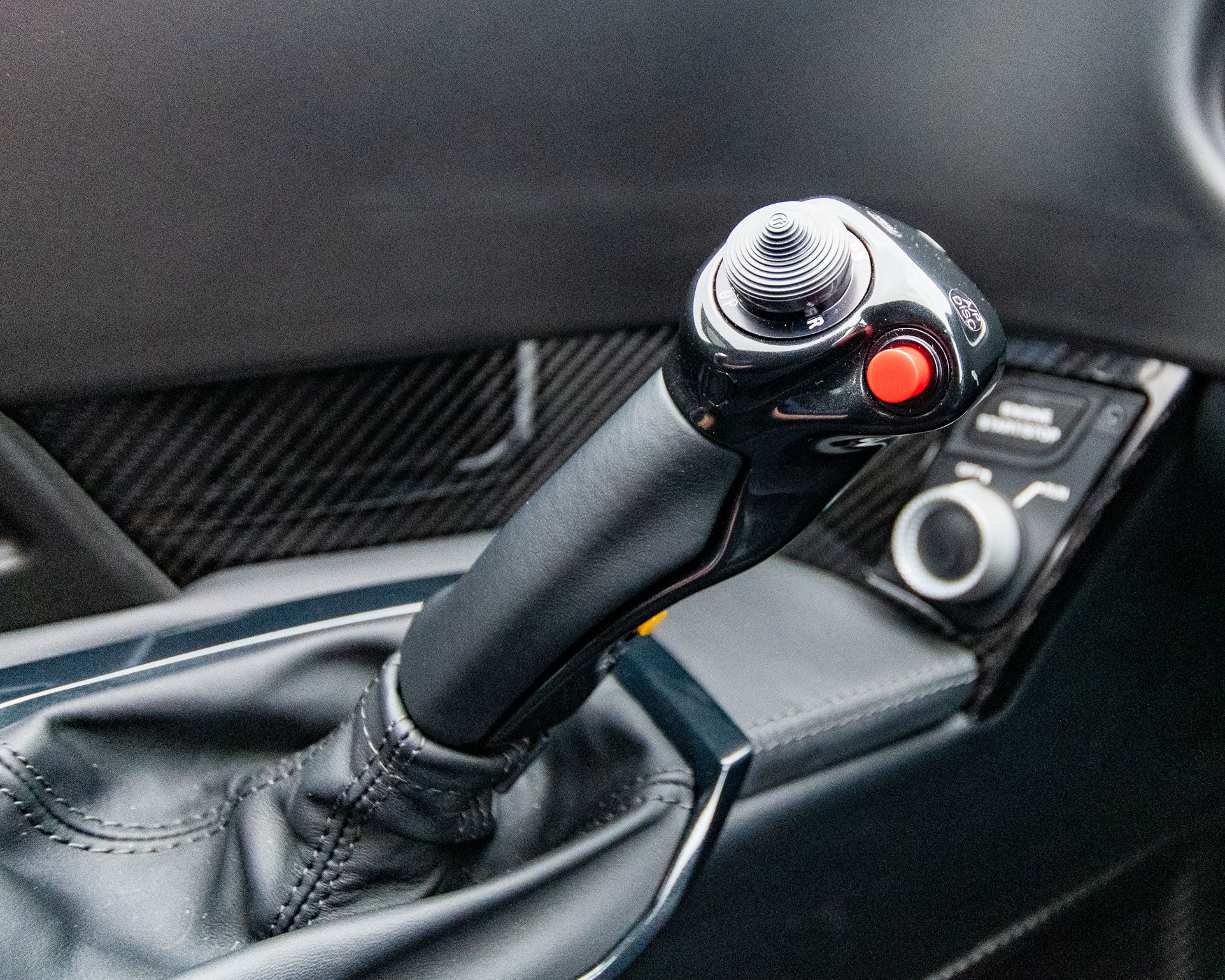
The Cirrus Vision Jet – like the Pilatus PC-24 profiled recently – is a business jet that one pilot can fly with up to seven humans aboard, including the pilot. The jet can go without refueling up to 1,275 nautical miles but, more realistically, 950 nautical miles cruising at 310 knots. One can check out Cirrus’ range map to see the range from their location.
The Cirrus Vision Jet can do this with its Williams International FJ33-5A turbofan putting out 1,846 lbs of thrust. Below you can see a 3D printed model explained to learn more about how the jet engine operates:
Yet, this is only touching the surface of the Cirrus Vision Jet’s capabilities. The aircraft comes with a full autopilot, including an autothrottle. Her five Garmin multi-function displays allow for a safe flight, full of relevant information about the aircraft, flight planning, mapping, and even a review of aviation charts. In fact, I was able to review the Jeppesen charts and takeoff obstacle notes for the Renton airport, as pictured below.
Photo: Joe Kunzler | Simple Flying
Cirrus Vision Jet full of modern safety technology
Photo: Joe Kunzler | Simple Flying
But this jet is also fully loaded with modern safety technology. Starting with the Cirrus Airframe Parachute System or CAPS that is intended, in a catastrophic emergency, to allow the aircraft to descend to the ground safely. Below Is a video describing the likely first use of such a system on the jet – and its safe recovery with all three souls surviving:
The Cirrus Vision Jet also has a “Safe Return Emergency Autoland System.” A passenger can activate the system, and when activated, it calculates where is the nearest compatible airport and then plots a path, taking into consideration both terrain and weather along the way with help from the Garmin avionics onboard.
As if this was not enough, the system will communicate with and transit emergency codes to air traffic control. The system will not just take a jet to the nearest airport but land on the calculated appropriate runway and stop the aircraft so the surviving passengers can disembark and enlist help.
In an August 30, 2020, Garmin statement, the CEO of Cirrus Zean Nielsen said;
With Safe Return, we are making personal aviation more accessible, elevating the passenger experience and taking the next step towards autonomous flight. The Vision Jet sets a new standard in personal travel with the combination of Safe Return and CAPS, offering the ultimate level of safety, control and comfort for the pilot and passengers.
The below YouTube of a Cirrus demonstration may also be of interest:
How can the Cirrus Vision Jet be used?
The Cirrus Vision Jet is intended to save time & money, allowing passengers to work while in flight with onboard WiFi and in leather seating. Plus, there is no Transportation Security Administration/TSA screening before boarding.
On the other hand, owner/operators are on the hook for all the costs of flying - fuel, maintenance, and aircrew. One estimate of hourly costs at ComparePrivatePlanes.com puts the hourly operating cost at $732. But US Aircraft Expo vendors gave the author a costing of around $1,000/hour.
The above testimonial, however, shows how a major US business in Sweetwater is able to haul its executives around the country and manage a logistics chain as a leading musical instrument sales company. But this is just one way that the Cirrus Vision Jet is used - as a business shuttle. Another is personal use for the joy of flying. Finally, there is the option of using the aircraft as an "Angel Flight" to provide necessary medical air transportation, which many private aircraft owners do.
If airliners obtained Cirrus technology, would you feel safer flying? Why or why not? Let us know in the comments.

